If you think back to high school science, you might remember talk of water pH.
I remember smugly telling my teacher, Mrs. Kennedy, “I will never need to know this when I am older.”
Well, it looks like Mrs. Kennedy had the last laugh – pH is something that I now regularly monitor in my aquarium.
And today I am going to teach you how to do the same!
So read on to learn everything you ever wanted to know about your aquarium’s pH!
[sc name=”aquarium-ph-text-links-code”]
Apera Instruments pH Pocket Pen 5/5
| ||
Freshwater Aquarium pH Test Kit 5/5
| ||
Saltwater High Range Test Kit 5/5
| ||
Wide range Test kit 5/5
| ||
Hydrion pH Paper 5/5
|
Contents
What is pH?
pH Stands for potential of Hydrogen.
And there are two answers as to what it is.
The short and simple one.
And the long and slightly more complex one.
Let’s start with the simple answer:
pH is a measurement used to determine whether the water in your aquarium is acidic or alkaline.
Yep, that’s really it – you are now free to skip to the next section.
For those of you who want the complicated answer… As you know, water is commonly referred to as H2O and is made up of Hydrogen and Oxygen molecules.
Perfectly pure water is made up of equal amounts of hydrogen ions (H+) and hydroxide ions (OH-).
To clarify: that’s H x 2 and O x 1. Combine them together and you get H20.
However, water is rarely pure. Dissolved chemicals and minerals can cause these ions to become unbalanced.
An increase in the amount of hydrogen ions (H+) causes the water to become more acidic.
An increase in the amount of hydroxide ions (OH-) causes the water to become more alkaline.
When measured, this is referred to as the pH of the water.
If you are finding that concept a little too complicated, don’t worry….
When it comes to aquarium pH, all you really need to know is the pH scale.
So if you want to forget everything I have told you up until this point, you can. I just wanted to give you some background info.
The pH scale takes the concept of balancing hydrogen and hydroxide ions and presents it in a simple and easy to understand chart:
The pH scale ranges from 0 to 14, with 7 being “neutral” or pure water.
As the pH goes up, your water becomes more alkaline.
As your pH goes down, your water becomes more acidic.
Now the thing to remember is that the pH scale is logarithmic, not linear.
This may seem confusing, but it’s actually pretty simply to explain.
A pH measurement of 5 is 10 times as acidic as a pH measurement of 6 A pH measurement of 4 is 100 times as acidic as pH measurement f 6 And so on…
So if the perfect water pH for your fish is 7, then 8 is 10 times more alkaline than what it should be.
Nine would be 100 times more alkaline that what is ideal for your tropical fish As you can see, even a small change in the pH can be quite a shock to your fish.
Tackling High pH Levels in Your Aquarium: A Closer Look
Let’s dive into the not-so-talked-about side of aquarium care: high pH levels. Yes, while low pH is often the talk of the town in fish tank circles, it’s the high pH that can be a silent tank terror. Understanding the culprits behind elevated pH levels is crucial for the health and happiness of your aquatic buddies.
1. The Tap Water Factor
When it comes to high pH levels, the usual suspect is your tap water. Most of us fill our tanks straight from the tap, right? Well, it’s important to remember that tap water can vary significantly in pH. So, always test your tap water before adding it to your tank. Grab a pH test kit, do a quick test, and compare the results with a pH test solution color chart. This little step can make a big difference in ensuring your water is just right for your fish.
2. Substrate Choices Matter
Did you know the substrate you choose can affect your tank’s pH level? It’s true! Certain substrates, like crushed corals, are notorious for nudging pH levels upwards. While these substrates are great for cichlids and saltwater tanks, they might not be the best choice for your tropical aquarium. So, choose your substrate wisely to keep that pH in check.
3. The Risks of a High pH Aquarium
A balanced aquarium is a happy aquarium. But when pH levels climb too high, it spells trouble. Your tropical fish could face increased illness risks, and their protective layers might get damaged, leaving them vulnerable to chemical burns on their gills, eyes, and scales. And plants? High pH can trigger a wild algae party, leading to a nitrate and ammonia nightmare.
4. Getting Your pH Meter Right
Consistent and accurate pH readings start with a well-calibrated pH meter. Here’s how you can ensure your pH meter is giving you the real deal:
Warm it up: Turn on your pH meter about 30 minutes before use.
Rinse, but don’t rub: Gently rinse the electrode with deionized water. Avoid rubbing the sensitive membrane.
Pat it dry: Use a tissue to dab the electrode dry gently.
Calibrate with care: Place the electrode in a standard pH 7 buffer solution. Adjust your meter accordingly. Remember, some meters might need additional calibration with solutions of different pH values.
Rinse and repeat: After calibration, give your electrode another rinse and a gentle blot.
By keeping a close eye on these factors, you’ll be better equipped to maintain the perfect pH balance in your aquarium, ensuring a healthier environment for your aquatic friends.
What is the ideal pH level for your aquarium?
To make things a little bit tricky, there is no “normal” pH environment for fish.
Your aquarium fish’s preferred pH level will entirely depend on the environment it comes from.
Depending on the species:
Freshwater fish are happiest in pH of 5.5-7.5.
Saltwater fish, on the other hand, prefer a pH of 8 or higher.
However, there are limits as to the pH that your fish will endure.[1]
- Below 6.5 pH – Your fish can become stressed and experience limited growth.
- Below 5 pH – Your fish won’t reproduce and any fry (baby fish) in the tank will likely die.
- Below 4 or above 11 pH – Death of your fish is almost certain.
But before you freak out, you need to remember:
Fish are very adaptable!
And they need to be.
pH is rarely static. It changes over time and can even change over the course of a day.
So when that textbook tells you that your fish’s ideal pH is 6.4, it probably doesn’t matter as long as the pH of your freshwater tank is between 6 and 7 – a stable pH is what is most important, pH swings are what can really stress your fish.
Why do you need to test the pH level in your aquarium?
To put it simply, water that’s too acidic or alkaline for your fish can interfere with their basic body functions.
This can leave your fish vulnerable to disease pH changes are particularly hard on young fish or fish that are already sick or stressed.
pH levels are particularly important for fish breeders. Some fish will only make sexy time at certain pH levels.
Unfortunately, there are no visible signs of the pH ranges.
Tank water with a high pH will look identical to water with a low pH.
The only way to truly determine the pH of your clean water is to test for it.
How to test the pH level of your aquarium
Unfortunately, there isn’t really a way to test the pH of your aquarium without buying a tester of some sort.
Fortunately, testing kits are cheap, accurate and will be more than appropriate for all but the diehard enthusiasts.
Let’s take a closer look at the different tools available to test your aquarium’s pH.
1. Aquarium pH Test Kit – Cheap And Accurate
Aquarium test kits are a great way to find the pH of your aquarium.
Simply add some of your tank water sample to the included test tube, add a drop of the testing solution and watch the partial water change color.
Then you simply match the color of the water with the corresponding color on the ID card to determine the pH of your tank.
When it comes to pH water test kits, the narrower the range, the more accurate reading.
Because of this, pH kits designed specially for aquariums will test for a pH of between 5 and 9 – because that’s the pH most fish are comfortable with.
Outside of this range, your fish will likely be dead.
Now, there is a downside to this method.
Let’s say your pH test returned a precise reading of 5.
Because this is the lowest the kit will test for, the pH of your tank could be 5 or it could be much lower.
But if you are just looking for a cheap pH test to accurately test the “comfort zone” of your tank, a pH test kit is the best way to do it.
Freshwater Aquarium pH Test Kit
Measures pH value: 6.0 – 7.6 in increments of .2
Best suited for: freshwater fish.
Saltwater High Range Test Kit
Measures pH value: 7.4 – 8.8 in increments of .2
Best suited for: Goldfish, marine fish and African cichlids.
Wide range Test kit
Measures pH value: 5.0, 6.0, 6.5, 7.0, 7.5, 8.0, 9.0
Best suited for; fish in outdoor ponds.
2. pH Test Paper – Broad Range But Less Accurate
Commonly known as test strips or litmus paper, this paper changes color according to how acid or alkaline a substance is.
Simply tear off a strip of paper, dip it into your aquarium water and wait for it to dry.
As the paper dries, it will change color. Compare the color to the chart on the box to learn the pH of your tank.
While it may give a broad range, it is much less accurate than using a pH kit.
Check out my test strip guide for more information on why I don’t recommend test strips for aquarium use.
Hydrion pH Paper
Measures pH value: 0-13 in 1 pH increments.
Best suited for: Water that may be out of your fish’s comfort range.
3. Digital pH Meter – When Accuracy Is Needed
Unsurprisingly, the most accurate pH testing tool is also the most expensive.
pH Meters are capable of reading any pH level within 0.1 accuracy.
I would only recommend a pH pen to serious fish keepers who intend on breeding schools of fish to sell.
Apera Instruments pH Pocket Pen – The most accurate
When it comes to price and reliability, Apera Instruments Digital pH Pen hits the sweet spot.
How often should you check your tank’s pH levels?
Assuming your tank is stable, many tank owners test pH just before doing a water change.[1]
However, there are circumstances when you may want to test the pH of your aquarium more regularly…
1. You are cycling a new tank – during cycling, your tank’s pH levels will bounce all over the place.
2. You are introducing new objects to your tank – New plants, wood, fish, substrate, etc. all have the ability to mess with your tank’s pH levels. You should test your tank’s pH levels frequently after the introduction to ensure there are no changes.
3. You are trying to change your tank’s pH level – This one is obvious: you want to make sure that the pH level of your tank is moving to the right end of the scale. Test frequently until it reaches your desired pH.
4. Your fish need a very specific environment – If you are trying to breed fish, you will want to test the pH levels of your tank much more frequently.
Conclusion
As you can see, your water’s pH can play an important role in the health of your fish.
Do you test your pH regularly? Let me know in the comments below!

Ian Sterling, founder of Fishlab.com, began his aquarium journey over 30 years ago, driven by a deep fascination for fish and their diverse personalities. His website, Fishlab.com, is dedicated to making fishkeeping accessible and enjoyable, offering beginner-friendly guidance, expert insights, and a community for aquarists to connect and share experiences.


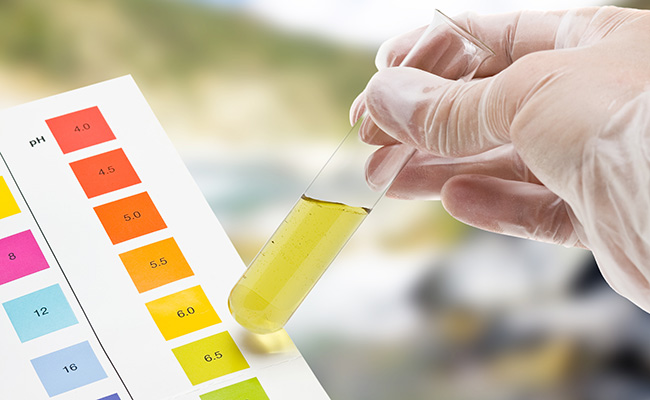





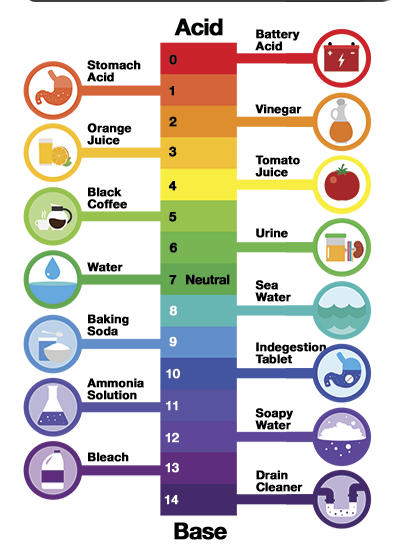
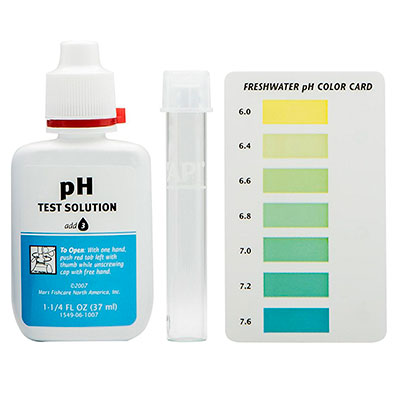
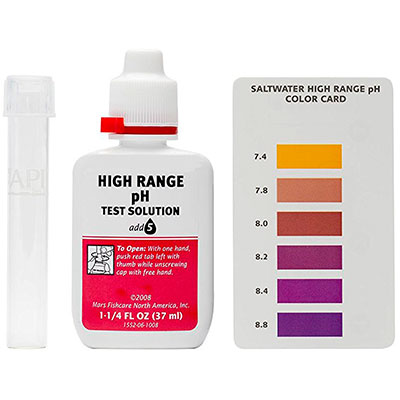
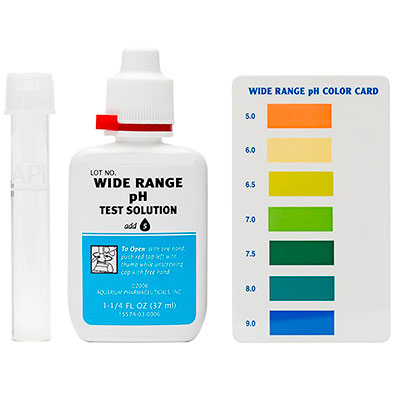
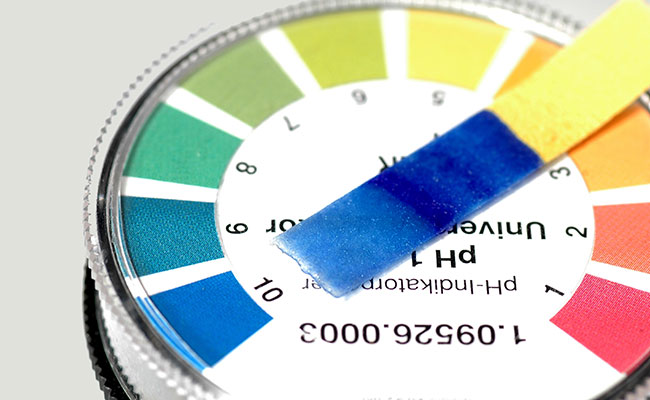

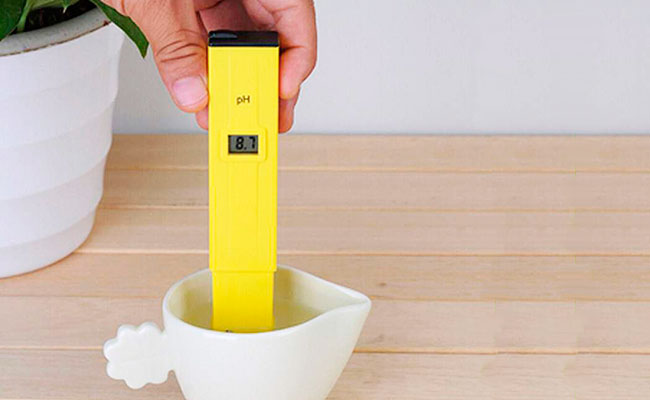

Comments (21)
Thanks great info for a beginer
It’s still confusing so if I tested it and came out yellow for ph level what does that mean does that mean it’s to low or to high.
Hi Jessica,
You would need to refer to the color chart included in your test kit. This gives a reading in relation to the color. As to whether it’s too low or too high, that depends on the brand of pH test and the fish you are trying to keep.
Test my water in aquarium test aka line what does that mean
Hi Dorothy,
In fishkeeping, it’s common practice to test your water with an aquarium test kit. The API Master test kit is the most popular one here
When you say test the water regularly. How often do you mean? Weekly, monthly?
Hi Dean,
As often as you feel is needed. I perform tests with my weekly water change, as part of my maintenance schedule. If your pH is fluctuating day to day, and you want to get it under control, then you will need to test more regularly to observe if the actions taken are working.
I have been keeping fishes for a long time. Never bothered to check the pH level of the water. The article was Great . Thanks . Very Clearly explained and it was interesting.
Hi Ian! I used this article for a school project, and it was very helpful! I couldn’t figure out a good explanation for what pH is, and your article stated it very clearly! Thank You!
Hi, Ian. I am having trouble cycling my tank — it’s been about 2 months and I’m not seeing much progress. I’ts a 6.7 gallon tank with one Betta. I’ll be honest — I wasn’t paying much attention to the PH. Tested yesterday and it is below 7. It has been the past few times I tested it as well. So now i’m thinking, maybe this is my issue. What is the best way to increase PH? I’ve seen some stuff at the store…but should I use that or something more natural?
Hi Kelli,
To raise the pH you have to raise the KH. I have a guide that explains KH simply here.
What are your test results for ammonia, nitrite and nitrate? If you look in natural light, it will be easier to match them to the color cart. Indoor lights can make the tests look off.
Thanks for your quick reply! I’ve been using the API master kit for testing. My numbers this morning were:
pH: 6.6
Ammonia: .25
Nitrite: 0
Nitrate: 0
I’ve been using the Seachem prime daily and doing a weekly water change of about 30%. Though I did just do a slightly higher water change of about 50% a couple days ago when I put in a new filter (the one that came with my tank stopped working so I changed to sponge, but left the old filter cartridge in the tank in case it had any beneficial bacteria on it).
Hi Kelli,
Thanks for the test results, it looks like your tank is in the very early stages of cycling, as you have no measurable nitrite or nitrate. Ideally you would want:
Ammonia 0
Nitrite 0
Nitrate – a readable result.
I’m sure you are all over this, but just in case you are not, I have a fish-in cycle guide here. If you have any other questions on the cycle, then please ask them in the comments of that article and I’ll do my best to answer.
I have tested my water a couple of times a week. The ammonia stays around 0-0.25. My Nitrite around 0. My Nitrate around 20. My PH level is around 6.0. My High PH is around 7.4. My fish keep dying. Right now I have no fish, and I bought some Alkaline buffer, and put in a nitra-zorb package, and do water changes one time a week around 25%. I put the alkaline buffer into my water, and so far my PH levels have stayed around the same. Does it take a day or two to show results of higher PH levels? I am at my wits edge, thinking I can not keep fish, as they die every time I add fish, every one of them. Help me please!!
Hi David,
Have you cycled your tank? If you are constantly reading ammonia, then your fish will forever face health problems – check your test kit in natural day light (indoor lighting can make the results look off)
If your pH is stable after adding buffer, then it’s possible that you have soft water, which can cause pH levels to bounce around which can shock and kill fish (read up on “aquarium KH” for more info on this)
Your best source of help is your local fish store (not a big-box chain store) – they will be successfully keeping fish using the same water source as you, making it easier to diagnose problems and give the correct advice.
Hi Ian,
I was wondering if topping up affects ph? I mean those occasional water top-ups between changes — does doing that cause significant, unhealthy fluctuations in ph?
Hi Catherine,
No, unless your water is super soft or hard, top ups should not cause pH to dramatically fluctuate. You can test this with your test kit.
Thanks Ian. Still trying to figure out what killed that betta and was thinking perhaps it was ph-related stress 🙁
Hi Ian, thanks for your great articles. Could you tell me what might make my pH regularly go up in my tank? The water out of my tap is consistently 7.0 but in my tank it is consistently higher – usually at the top of my test range at 7.6. Adding pH down twice a week doesn’t seem to be lowering the pH level to any lasting degree. The weekly water change lowers it slightly but within a few days it is high again. My ammonia, nitrite and nitrate levels are consistently ok. I’ve had all levels tested at my local pet store to make sure my pH kit isn’t faulty and I get the same results. The staff are supportive but don’t know what could be making it go up compared to what it is out of the tap – they’ve said they’ve never seen it happen before. My fish (danios, Chinese algae eaters and kulhi loaches) seem healthy and happy but I’d like to solve the puzzle and any tips you could give me will be gratefully received! Thank you.
Hi Amelia,
Do you use a petstore like petco or petsmart? I only ask because they should have directed you to test the KH – which is the common reason why pH continues to rise. Most fish stores should have seen a situation like this before.
Also, when you say your ammonia, nitrite and nitrate levels are okay, what are the actual readings?
Check out this article on KH for more information about how it works and it’s interaction with pH:
https://fishlab.com/aquarium-kh/
i am re-learning how to take care of my fish so thanks